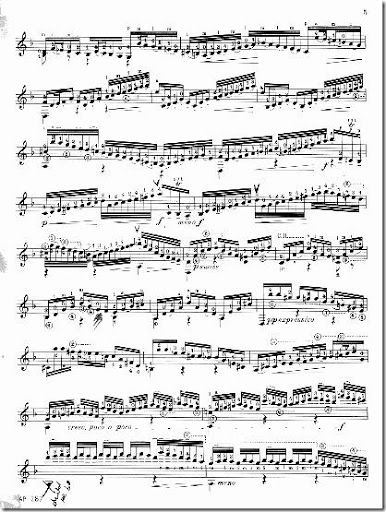One of my all-time favorite pieces is the d minor Chaconne by Johann Sebastian Bach. Albert Valdes-Blain told me that no guitarist should play this piece in a recital until they'd reached their fortieth birthday. He felt a younger man couldn't possibly have built up the emotional 'bank account' to successfully impart anything to the music. My personal opinion? I don't believe any player will successfully find, interpret and deliver the full range of emotional content Bach wrote into this piece. It is a masterwork, some argue the one of the brightest lights of Western culture.
The Chaconne is a set of variations stemming from a brooding, dark theme crafted from a series of three and four note chords. Originally written for the violin, the violinist dreads the chordal variations and runs through the scale stuff. The guitarist breaths a sigh of relief on the chordal stuff and sweats the scales! One man's poison... Well, about two pages into the Segovia edition we find the first brutally quick scale passages. Due to the complexity of the implied harmonies in these melodic runs, the guitarist must articulate every note. Each note is a gem set by a master. This is not a chance to show off chops, it is an opportunity to touch souls!
Please note the drop D tuning. Practice this passage slowly and with an open ear. The harmonies are simply spectacular. As with all exercises I've given you, practice slowly and cleanly with high articulation. Feel free to play with different fingerings and string voicings. A metronome will come in very handy!
You can see plainly that I've messed with Segovia's work. This is what works for me; it doesn't mean that's the way you have to perform the passage. Find a copy of the violin score and note the legato markings. You know, whenever you learn a piece transcribed from another instrument's repertoire, go back tot he original score and check it out. You may see something that the transcriber missed.












No comments:
Post a Comment